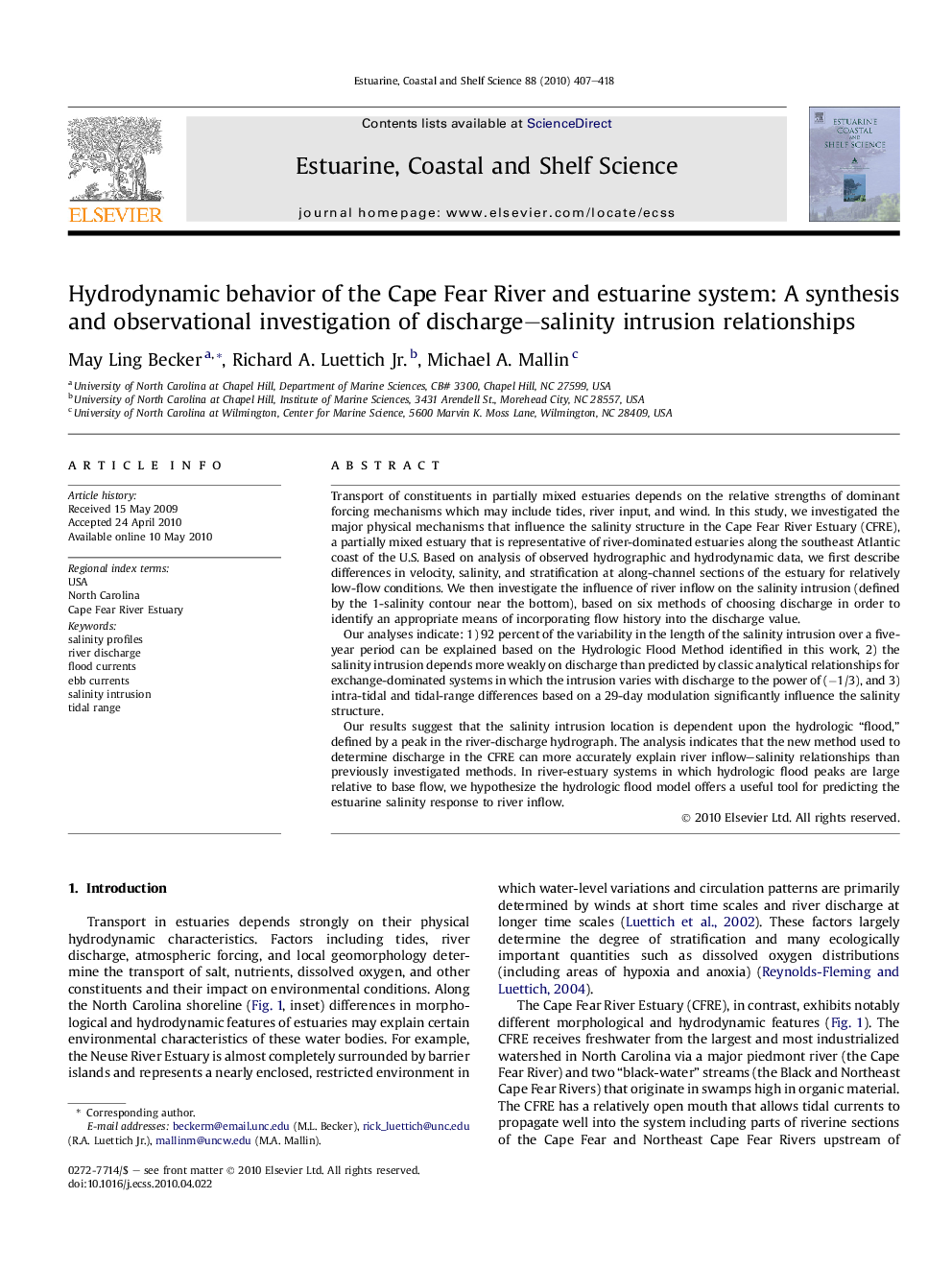| Article ID | Journal | Published Year | Pages | File Type |
|---|---|---|---|---|
| 4540831 | Estuarine, Coastal and Shelf Science | 2010 | 12 Pages |
Transport of constituents in partially mixed estuaries depends on the relative strengths of dominant forcing mechanisms which may include tides, river input, and wind. In this study, we investigated the major physical mechanisms that influence the salinity structure in the Cape Fear River Estuary (CFRE), a partially mixed estuary that is representative of river-dominated estuaries along the southeast Atlantic coast of the U.S. Based on analysis of observed hydrographic and hydrodynamic data, we first describe differences in velocity, salinity, and stratification at along-channel sections of the estuary for relatively low-flow conditions. We then investigate the influence of river inflow on the salinity intrusion (defined by the 1-salinity contour near the bottom), based on six methods of choosing discharge in order to identify an appropriate means of incorporating flow history into the discharge value.Our analyses indicate: 1) 92 percent of the variability in the length of the salinity intrusion over a five-year period can be explained based on the Hydrologic Flood Method identified in this work, 2) the salinity intrusion depends more weakly on discharge than predicted by classic analytical relationships for exchange-dominated systems in which the intrusion varies with discharge to the power of (−1/3), and 3) intra-tidal and tidal-range differences based on a 29-day modulation significantly influence the salinity structure.Our results suggest that the salinity intrusion location is dependent upon the hydrologic “flood,” defined by a peak in the river-discharge hydrograph. The analysis indicates that the new method used to determine discharge in the CFRE can more accurately explain river inflow–salinity relationships than previously investigated methods. In river-estuary systems in which hydrologic flood peaks are large relative to base flow, we hypothesize the hydrologic flood model offers a useful tool for predicting the estuarine salinity response to river inflow.
